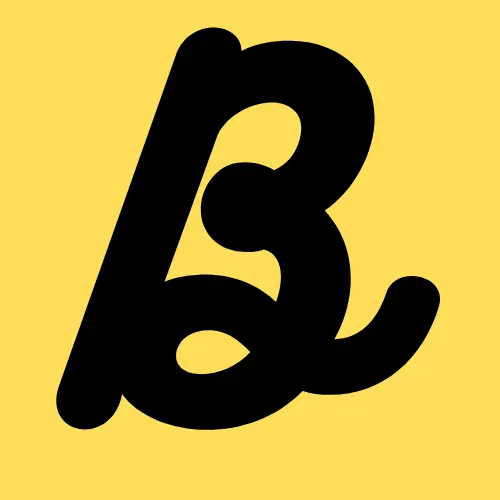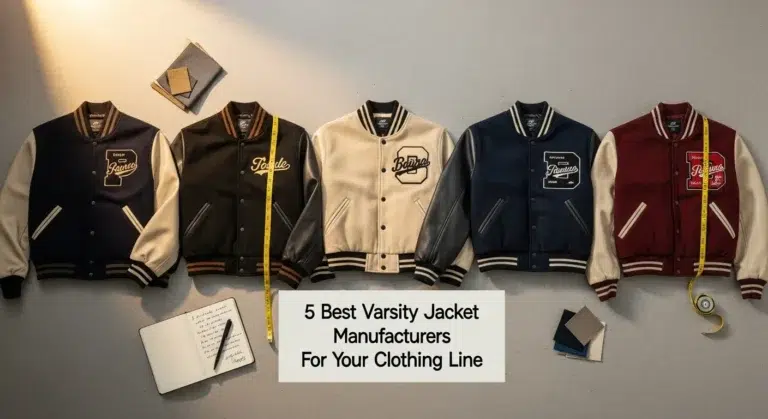10 Types Of Buttons For Clothes: Essential Styles and Uses
Buttons are a small but important part of clothing that serve both practical and decorative purposes. They come in many shapes, sizes, and materials, each suited for different types of fabric and styles. Learning about buttons helps people understand how clothing is made and how to choose the right button for each garment.

This guide explains the many types of buttons used in clothes and how their design affects function and appearance. It covers the essentials that anyone interested in clothing or sewing should know about buttons, helping readers make informed choices.
Table of Contents
1) Flat 2-hole buttons

Flat 2-hole buttons are one of the most common types used in clothing. They have a flat surface with two small holes in the center. These holes allow the button to be sewn directly onto fabric by hand or machine.
They work well with many fabrics, from light to medium weight. Because of their simple design, they are easy to use and cost-effective for everyday clothes. The two holes give enough strength to keep the garment closed securely.
Flat 2-hole buttons come in many materials, such as plastic, metal, wood, and even pearl. This variety lets designers choose based on style and durability. They can be plain or decorated to add a bit of flair.
This button type is practical and versatile. It is often found on shirts, blouses, and light jackets. Its straightforward design makes it a staple in both casual and formal wear.
2) Flat 4-hole buttons

Flat 4-hole buttons are one of the most common types used in clothing. They have four holes arranged in a square, which gives extra strength when sewn onto fabric.
These buttons are especially useful for heavier fabrics. The four holes allow for different stitching patterns, improving button security and durability.
Flat 4-hole buttons come in many materials, such as plastic, metal, wood, and even pearl. This variety makes them suitable for many styles and purposes.
Because they lie flat against the fabric, these buttons are often chosen for shirts, coats, and crafts. They combine practicality with a simple, clean look.
Their design allows easy replacement or customization, which is why they remain popular in sewing and fashion projects.
3) Shank buttons

Shank buttons have a small loop, called a shank, on the back. This loop raises the button above the fabric. It makes sewing easier and allows the button to move freely.
These buttons are often used on thick fabrics like denim or tweed. The raised design helps the button fit securely through buttonholes on heavy materials.
Shank buttons come in many sizes, shapes, and materials. They can be metal, plastic, wood, or other materials, giving many style options.
Unlike flat buttons, shank buttons do not have holes on their face. Instead, they attach through the shank loop. This can protect the fabric from wear caused by thread pulling through.
They are both functional and decorative. Shank buttons often add a polished look to garments, making them popular for coats, jackets, and suits.
Choosing the right shank button depends on the garment’s fabric and the desired style. Their unique design suits many fashion and sewing needs.
4) Stud buttons

Stud buttons are strong and secure fasteners often used on heavy fabrics like denim and outerwear. They usually consist of two parts that snap together, providing a tight hold that resists coming undone.
They are common on jeans, jackets, and workwear because they offer durability and ease of use. Unlike traditional sew-through buttons, stud buttons do not have holes; instead, they fasten by pressing the two components together.
Stud buttons come in metal or plastic materials. Metal studs are preferred for heavy-duty clothing due to their strength, while plastic ones are lighter and used for casual wear.
These buttons also add a decorative element to garments. Their simple design fits well with rugged, practical clothing styles.
Installation usually requires special tools or equipment to set the studs securely into place. This makes them less common for casual sewing but ideal for professional or industrial clothing manufacturing.
5) Toggle buttons

Toggle buttons are a type of fastener commonly used on outerwear like coats and sweaters. They consist of a long, usually cylindrical piece that passes through a loop to close two pieces of fabric.
They are simple and practical. Toggles are easy to handle, even with gloves on, which makes them popular for cold-weather clothing.
Besides clothes, toggle buttons can be found on bags and purses as a decorative and functional element. They often add a rustic or natural look, especially when made of wood.
Toggle buttons do not have holes like regular buttons. Their design relies on the shape and closure mechanism rather than sewing through holes.
These buttons work well when a firm and secure closure is needed without the need for complex stitching. They help give garments and accessories a unique style.
6) Snap buttons

Snap buttons are fasteners used to join two pieces of fabric quickly and securely. They are also known as press studs, poppers, or snap fasteners. Most snap buttons come in two parts that click together, usually made of metal or plastic.
They are popular in clothing like jeans, jackets, and babywear because they are easy to use with one hand. Snap buttons are durable and hold fabric tightly, making them a good choice for both heavy and light materials.
Snap buttons have four main parts: the cap, socket, stud, and post. These parts work together to create a firm closure that stays fastened during regular use. They are common in both fashion and practical clothing items.
Installing snap buttons is simple, which makes them popular for DIY projects and repairs. They are available in different sizes and materials to suit various fabrics and styles. Designers often choose snap buttons for their clean look and functionality.
7) Covered buttons

Covered buttons are buttons wrapped in fabric that matches or complements the garment. This gives a smooth and uniform look to the clothing. They often add a subtle, elegant touch without drawing too much attention.
These buttons have a base usually made of plastic or metal. The fabric is stretched tightly over the base and secured underneath. This method protects the fabric and keeps the button solid.
Covered buttons are common on dresses, suits, and decorative items. They are used when the designer wants the button to blend with the material rather than stand out.
They can be made with many types of fabric, including silk, cotton, or velvet. Because they are fabric-covered, they may need gentle washing to avoid damage.
Covered buttons are not suited for heavy-duty use. They work best on light to medium-weight fabrics and for outfits meant to look stylish rather than rugged or casual.
8) Metal buttons

Metal buttons are strong and durable fasteners used on many types of clothing. They often appear on jeans, jackets, and heavy fabrics where extra strength is needed.
These buttons come in different metals like brass, aluminum, iron, stainless steel, and zinc alloy. Each metal has unique qualities such as resistance to rust or a specific look.
Metal buttons can be plain or decorated. Some have smooth surfaces, while others may feature patterns or logos. This makes them both functional and stylish.
They are usually attached by sewing through holes or using a shank, which is a small loop on the back. This method helps the button stay secure on thick or heavy materials.
Because metal buttons can handle wear and tear well, they are popular on workwear and outdoor clothing. They also add a classic touch to fashion garments.
9) Wooden buttons

Wooden buttons are made from different types of wood like oak, maple, cherry, and walnut. They come in various shapes such as round, oval, square, and rectangular. This variety allows them to fit many styles of clothing.
These buttons can be plain or decorated. Some are carved or painted to add more detail. Their natural look brings a rustic and simple charm to garments.
Wooden buttons are not only used for clothes. People use them in crafts, jewelry, and home decor because of their versatility. They can be stained or left natural to match the fabric they are attached to.
They are usually durable and provide a sturdy option for fastening clothes. Wooden buttons also add a natural feel that plastic or metal buttons do not offer.
10) Plastic buttons

Plastic buttons are the most common type used in modern clothing. They are made from materials like polyamide, acrylic, nylon, and polyester. These materials make the buttons strong and lightweight.
They come in many shapes, sizes, and colors. This variety allows designers to match plastic buttons to different styles and fabrics easily. Plastic buttons can be flat, shank, or have multiple holes.
Plastic buttons are also durable. They resist wear and can handle exposure to water and sunlight better than many natural materials. Because of this, they are often used on everyday clothes and outerwear.
These buttons are cost-effective to produce. This makes them popular for mass-market clothing. Despite their low cost, plastic buttons can look stylish and fit a range of fashion needs.
Some plastic buttons may be less eco-friendly than natural alternatives. However, advances in recycling and materials help reduce their environmental impact. Overall, plastic buttons remain a practical choice for many garments.
Materials and Construction

Buttons come in many materials and are made using specific techniques. These choices affect how the button looks, feels, and how strong it is.
Common Button Materials
Buttons are often made from plastic, metal, wood, and natural materials like bone or shell.
Plastic is most common because it is cheap and easy to shape. It can mimic other materials and come in many colors.
Metal buttons add strength and style. They are used in denim jackets and formal wear.
Wood buttons bring a natural, rustic look. They are less common but used in casual clothing.
Shell buttons, especially made from mother-of-pearl, are found in dress shirts for a shiny, elegant finish.
Each material has different durability, weight, and care needs. The right material depends on garment type and use.
Button Manufacturing Techniques
Buttons can be made by molding, cutting, or carving.
Molding is common for plastic buttons. Liquid plastic is poured into a mold and hardened, creating uniform shapes quickly.
Cutting involves slicing shapes from a larger piece, often used for wood or shell buttons. These buttons are then polished to smooth edges.
Carving is done by hand or machine on materials like bone or wood, producing more detailed designs.
Some buttons are assembled from multiple parts, like shank buttons with a loop on the back instead of holes.
These methods affect cost, appearance, and strength of the button. Manufacturers pick techniques that suit the material and intended garment use.
Choosing the Right Button for Your Garment

Selecting the proper button requires attention to how it works with the fabric, garment style, and purpose. Material choice, size, and attachment type all influence the button’s effectiveness and appearance. Placement impacts both the garment’s fit and how easy it is to use.
Factors Affecting Button Selection
Fabric type is a key factor. Heavy fabrics like wool need larger, sturdier buttons, often made of metal or horn. Lightweight fabrics like silk work best with smaller, lighter buttons made of plastic or mother-of-pearl.
The garment style matters. Formal wear calls for sleek, subtle buttons, while casual clothing can have bold or decorative options. Button material should also complement the fabric. For example, natural wood buttons suit rustic or outdoor clothing well.
Size and shape affect both look and function. Larger buttons are easier to handle but can overwhelm delicate fabrics. The button’s thickness and finish should not damage or pull on the fabric.
Button Placement and Functionality
Button placement varies by garment type. Jackets often use larger buttons spaced apart for strength and appearance. Shirts need smaller, closer buttons to provide secure closure without bunching.
The button’s function influences where it is placed. Buttons on pockets or cuffs serve both decorative and practical roles. Front closure buttons must align perfectly with buttonholes for easy fastening.
Attachment type, such as shank or flat buttons, affects movement and durability. Shank buttons work well on thick fabrics by allowing space between the button and fabric, reducing stress on seams.
Proper placement improves comfort and the garment’s overall look. Buttons should hold fabric firmly but allow freedom of movement.
Frequently Asked Questions
Buttons come in many materials and fastening types, each suited for different fabric weights and uses. Their shapes and styles also impact the overall design and function of clothing.
What materials are typically used to make buttons for clothing?
Buttons are often made from plastic, metal, wood, and sometimes fabric-covered materials. Plastic is the most common due to its durability and variety of colors. Metal buttons are stronger and often used for jeans or uniforms. Wood and fabric buttons offer a more natural or decorative look.
How do you categorize buttons based on their fastening mechanisms?
Buttons are mainly categorized as flat buttons, shank buttons, stud buttons, and toggle buttons. Flat buttons fasten through holes sewn onto the fabric. Shank buttons have a small loop on the back for sewing, keeping the button raised. Stud buttons snap into place, providing a secure closure. Toggle buttons loop through a piece of fabric or rope.
What are some examples of decorative buttons for high-end garments?
High-end garments often use fabric-covered buttons, metal buttons with intricate designs, and mother-of-pearl buttons. These add a touch of elegance and style while serving a practical purpose. Decorative buttons can also feature unique patterns or embossing.
In what ways can the shape of a button influence clothing design?
Button shapes affect both style and function. Round buttons are the most common and versatile. Square or novelty shapes add character and can make a garment stand out. Larger or thicker buttons may be used on heavy coats, while smaller buttons suit lightweight fabrics.
What is the function of shank buttons, and how are they sewn onto garments?
Shank buttons have a small loop or “shank” on the back instead of holes through the button face. This design lifts the button off the fabric, allowing thicker fabric layers to fit between the button and garment. They are sewn by attaching thread through the shank only.
How can one distinguish between a stud and a press button?
Stud buttons snap securely onto a matching piece, creating a fast closure without sewing through holes. Press buttons, also known as snap buttons, often come in two parts and require pressure to close. Stud buttons are usually firmer and used on heavier materials.







